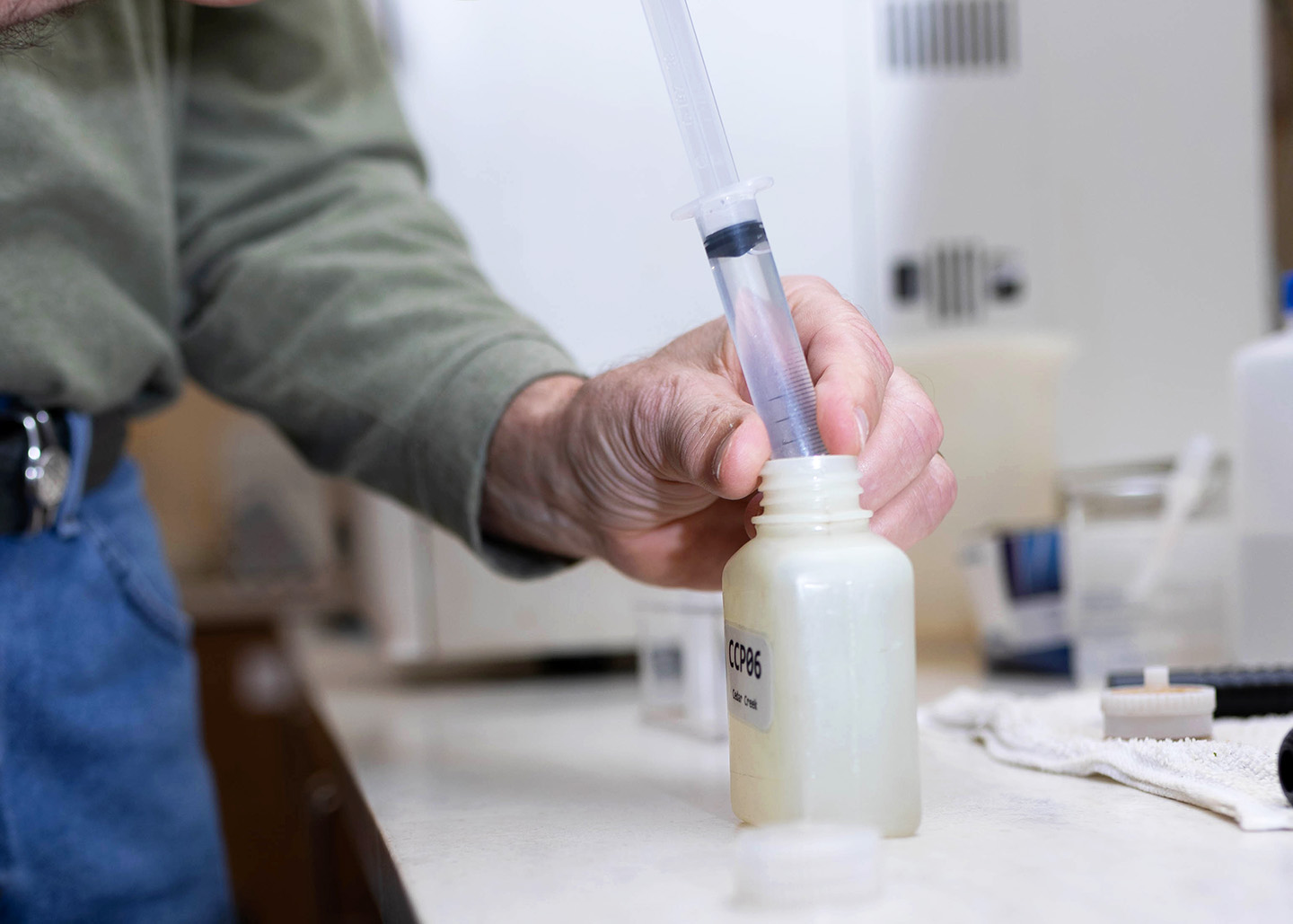
(Photo: Joclyn Bushman/Iowa Soybean Association)
Dive into water monitoring with ISA researchers
May 26, 2022 | Brock Johnston
Iowa farmers value data and science to solve problems. As land stewards, the state’s soybean growers continue to incorporate cutting edge tactics backed by research yielding tangible results to improve, enhance and restore natural resources benefiting all Iowans.
The Iowa Soybean Association’s (ISA) Research Center for Farming Innovation (RCFI) has published a Water Monitoring Report for farmers, landowners and prospective partners interested in implementing or learning more about RCFI water management efforts. The resource provides valuable insights into water quality improvement practices, results and ISA engagement opportunities.
“Knowledge gained from years of concerted research efforts with farmers, local government agencies, counties, municipalities, universities and ag retailers has allowed RCFI to position water monitoring, evaluation, programs and reliable information to interested growers and partners,” says Roger Wolf, RCFI director.
Key areas of the inaugural report include work on existing water monitoring efforts, watershed partnerships, and in-field and edge-of-field practices, including cover crops, bioreactors, saturated buffers and drainage water recycling. Participating in ISA water monitoring and accessing management resources provide:
- Glimpses into ISA research projects, data sets and dynamics impacting water quality like weather, geography and land use. In 2021, data paired from Agriculture’s Clean Water Alliance stream sites at U.S. Geological Service gage stations throughout Iowa ranked lowest on average for nitrate concentrations and export loads since 2007, except for the upper reach of the Boone River, ranking second lowest. The decrease in average nitrate concentration can be attributed in part to prolonged drought conditions across much of the state in 2021, as movement of water and subsequent nutrient exports from larger watersheds were impacted. Ongoing research is underway, studying the lingering effects of drought on nitrogen loss in the following year.
- Insights into current conditions in nearby tile lines, streams, rivers, lakes, wetlands and more. Although many sources contribute to nitrogen in surface water, subsurface drainage is a primary mode of nitrogen delivery. From 2016 to 2021, annual average nitrate concentration at over half of 1,800 tile nitrate monitoring sites (54%) fell under a “medium” category. ISA researchers and others in the Midwest typically observe nitrate concentrations in this range for corn/soybean or continuous corn rotations using standard farm management practices. It indicates, however, the need for additional nutrient strategies, including cover crops or edge-of-field practices, to meet state nutrient reduction goals. Only 12% of sites showed a strong need for changing current nutrient management practices.
- Opportunities to validate changes in water quality following the use of management techniques, products and practices. To continue monitoring statewide water quality trends, ISA’s on-site water lab analyzed more than 4,100 individual samples as part of 20 projects in 2021. Accredited by the U.S. Environmental Protection Agency through the Iowa Department of Natural Resources, the facility studies samples for common nutrients like nitrates, nitrites and phosphorus, as well as tests for turbidity, alkalinity and hardness, total phosphorus and ammonia nitrogen. Some factors, including nitrogen and crop and soil management, are manageable for farmers. Other factors, including geologic setting, environmental factors and nitrogen mineralization from soil organic matter, remain outside farmers’ control.
“If you are a farmer or prospective partner wanting to learn more about water monitoring, research products, involvement opportunities or management practices, RCFI stands ready to engage with you,” says Wolf.
Back